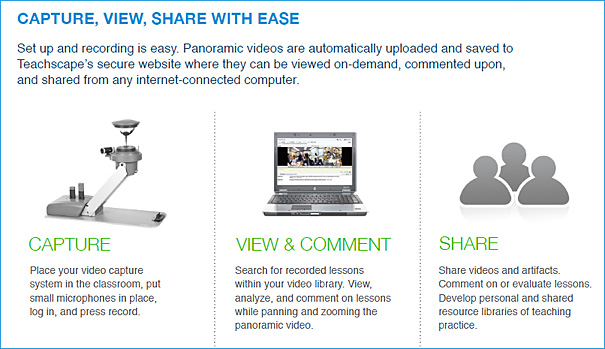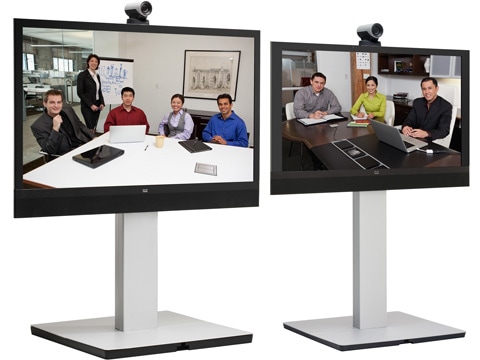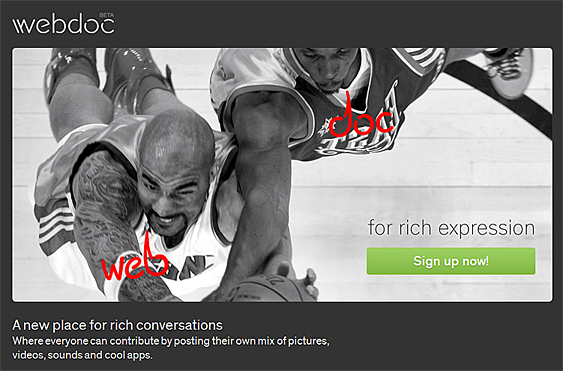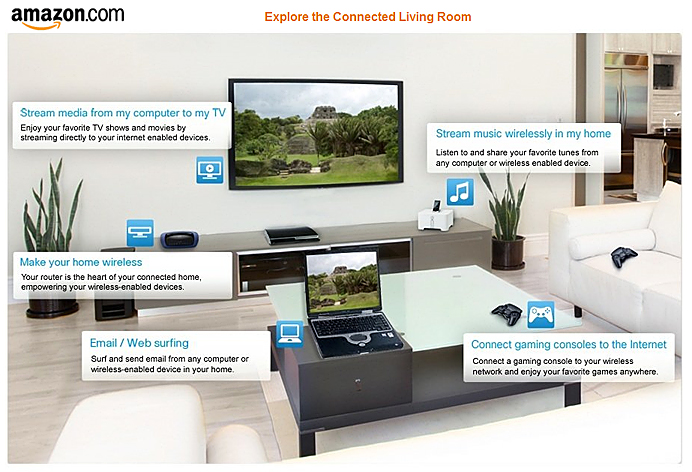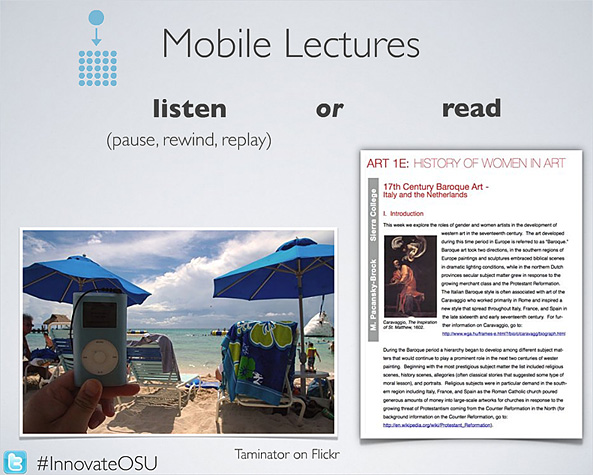Check out the Teachscape Reflect product — looks very promising!
Excerpt:
What if you could accurately capture everything that happens in the classroom? Imagine being able to catch every detail of teaching and learning, and then being able to review the captured material online anytime, anywhere, to assess instructional practices.
By combining 360-degree video and high-quality audio capture with online collaboration tools featuring research-based frameworks—including Charlotte Danielson’s Framework for Teaching—Teachscape Reflect delivers a classroom observation system and virtual professional learning community anchored in a common definition of teacher effectiveness.
From DSC:
We may be investigating this product for use with supporting remote student teachers. But Reflect can also be used for professional development purposes as well.
Also see:
- Video Tools Take Panoramic View of Classrooms — from EdWeek.org by Ian Quillen










